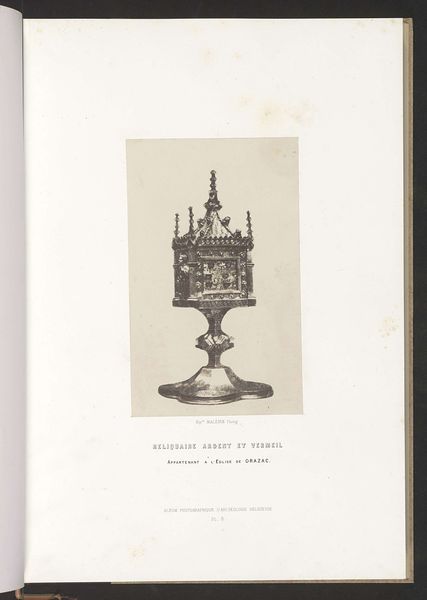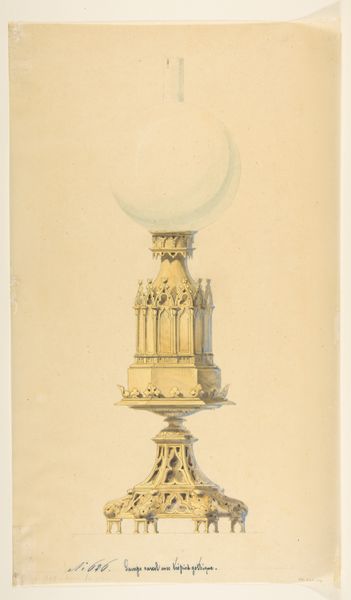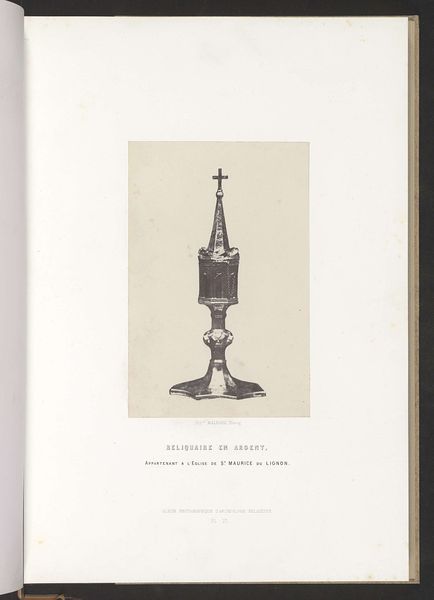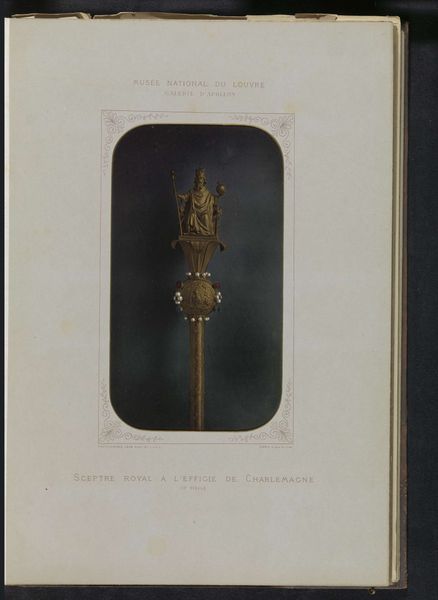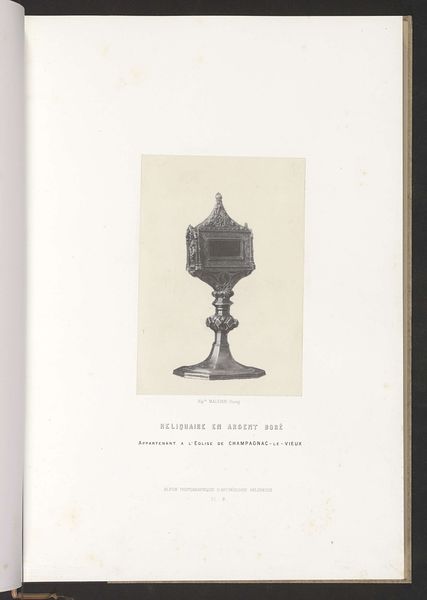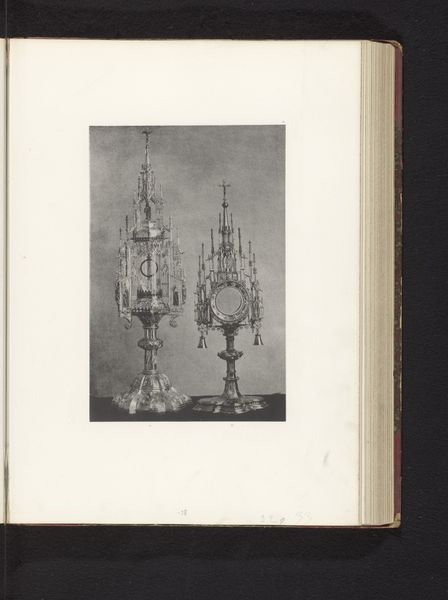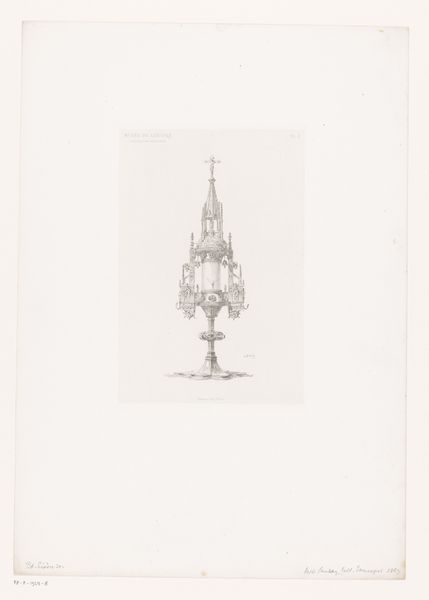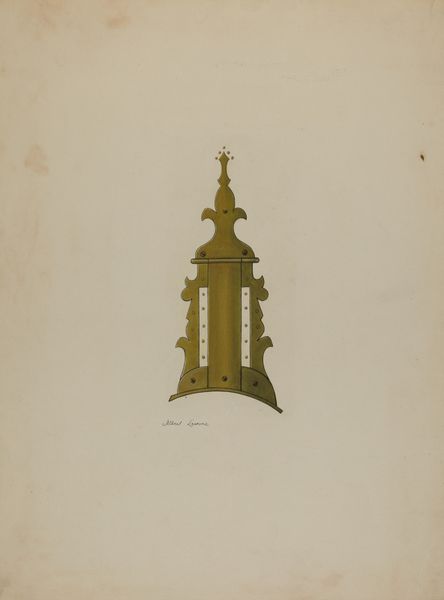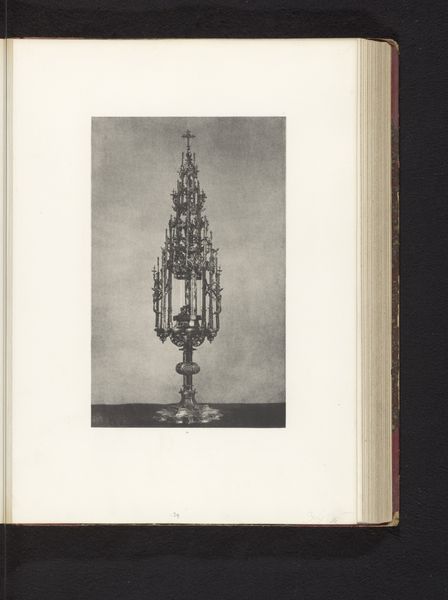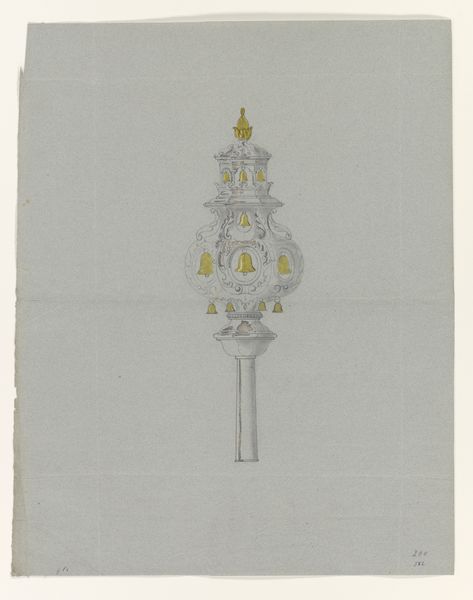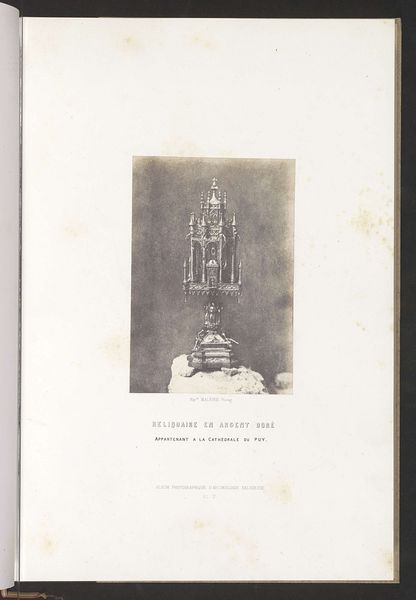
print, photography
# print
#
photography
#
decorative-art
Dimensions: height 335 mm, width 204 mm
Copyright: Rijks Museum: Open Domain
Editor: Here we have a photographic print by Léon Vidal, dating back to around 1876-1883, showcasing a gilded monstrance from the late 15th century. I'm struck by how the dark background makes the ornate details of the monstrance appear to glow. What stands out to you in this image? Curator: Immediately, the manipulation of light and shadow seizes my attention. Vidal orchestrates a carefully balanced composition, utilizing chiaroscuro to accentuate the verticality of the monstrance. Notice how the illumination sculpts the intricate filigree, emphasizing its materiality and form. Does the central void, the clear space within the cylinder, suggest a formalist reading? Editor: You mean, like, the empty space itself is important? I hadn’t thought about that. Curator: Precisely. The negative space creates a tension, drawing the eye and prompting contemplation. It counteracts the dense ornamentation, establishing a visual rhythm. Moreover, consider the textured surface—the interplay of metallic sheen and shadowed recesses generates a tactile quality, almost inviting physical interaction despite the medium’s inherent two-dimensionality. Do you observe the implied geometry within its overall shape? Editor: Yes, the vertical lines are broken by the round base of the monstrance, and then repeated towards the very top. The spire-like shape creates movement. Curator: Precisely, and how do these shapes function independently but coalesce together into the larger overall work? Editor: I guess I had only seen the monstrance, and not really noticed those separate elements of shape and space as separate and interconnected. It gives the whole picture so much more nuance. Curator: Indeed, focusing on these details transforms our understanding.
Comments
No comments
Be the first to comment and join the conversation on the ultimate creative platform.

